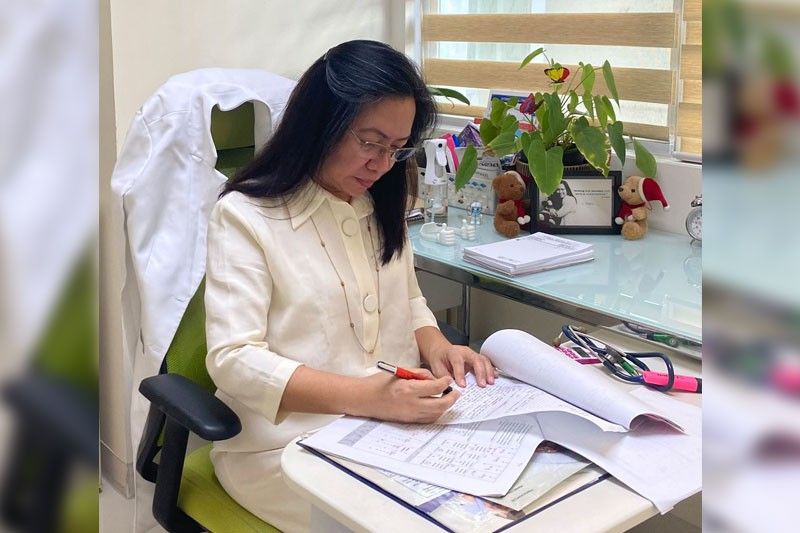Expert weighs in on growing problem of pediatric diabetes

MANILA, Philippines — In 2021, The Diabetes Atlas of The International Diabetes Federation (IDF), an umbrella organization of over 230 national diabetes associations, projected that by 2030, the number of adults with diabetes in the Philippines will further rise to 5.4 million people and an estimated 7.5 million people by 2045.
Diabetes has long been a threat to local public health, consistently ranking among the country’s top ten causes of death. With only eight years to go until 2030, the way we address diabetes in the country must change, especially since the disease is now slowly gaining ground among younger Filipinos as well.
According to Dr. Cynthia Feliciano, a pediatric endocrinologist and President of the Philippine Society of Pediatric Metabolism and Endocrinology (PSPME), these numbers are a significant cause of concern because even after the amount of research poured into diabetes, there is still no cure for Type 1 Diabetes.
Findings from the IDF Diabetes Atlas point to around 2,200 cases of Type 1 Diabetes reported among patients whose ages range from 0-14 years old. Elaborating further, Dr. Feliciano explained:
“Concerns surrounding the growing tally of children with diabetes have heightened due to the COVID-19 pandemic limiting opportunities for children to be physically active. Treatment is always directed towards managing the amount of sugar in a patient’s blood using insulin, dietary management and lifestyle changes to prevent complications.”
Early warning signs
In terms of early indicators, children with diabetes usually urinate frequently and feel thirsty often. Bedwetting may occur even among those who never did so before. Other symptoms include extreme feelings of hunger, weight loss and fatigue.
Dr. Feliciano stressed the importance of recognizing these symptoms early, saying “If these tell-tale signs are not recognized, children may experience nausea, vomiting, abdominal pain and difficulty breathing which could signal a decompensated state of diabetes where severe, life-threatening complications can arise.”
For parents who worry whether their child may have diabetes, Dr. Feliciano affirms the importance of staying ahead of any possible complications, saying “The key to early detection of pediatric diabetes is routine checkups with a pediatrician to gauge a child’s overall health. However, clinicians must also be vigilant in evaluating clinical presentations suggestive of diabetes.”

Helping children manage diabetes
When asked about the ideal methods for helping children with diabetes manage their conditions, Dr. Feliciano touched on a wide array of solutions and strategies.
“There are many available tools and strategies to help make managing the condition easier. Firstly, a child with diabetes as well as the entire family should have a good grasp of what diabetes is all about to make the necessary adjustments," Dr. Feliciano said.
With treatment hinged on lifestyle changes, a strong support system from family and friends who also embrace healthy eating and regular physical activity can prove to be invaluable as these are cornerstones in the management of diabetes,” she added.
Beyond family support, regular glucose monitoring helps ensure one’s sugar levels are maintained within a target range so medications can be adjusted accordingly. Finger pricking is an established method of determining blood sugar levels, but these methods can be painful for children and inconvenient when needed to be done outside their homes.
Going deeper into how glucose monitoring technologies have become more convenient, Dr. Feliciano explained:
“The good news is that there are new technologies available which can significantly reduce the difficulties involved in frequent finger pricking to monitor a child’s blood sugar. Continuous Glucose Monitoring (CGM) technologies such as the Abbott FreeStyle Libre System enables unlimited glucose measurements in the patient’s interstitial fluid by scanning through a reader and sensor.”
“Through CGM technology, patients are provided a complete glucose profile which shows trend information that helps in the personalized management of one’s diabetes. They are practical choices as they make glucose monitoring painless, hassle-free and cost-efficient,” Dr. Feliciano added.
Helping develop and maintain a personalized diabetes management strategy is a significant strong point Dr. Feliciano sees with CGM technology, as real-time data and information help patients stay on top of their conditions.
“CGM data can also help parents and doctors determine what food a child with diabetes can eat and when to eat it, when and which exercises are appropriate and when to start injecting insulin. Doctors can also monitor these trends through cloud-based technologies such as LibreView,” said Dr. Feliciano.
The way forward
With 2030 less than a decade away, the time is now to shift the ways in which diabetes is managed, especially for children with the rest of their lives ahead of them.
As technology in healthcare develops at a rapid pace, Dr. Feliciano has reasons to be optimistic about the future of diabetes care.
“As digitalization in healthcare continues due to the COVID-19 pandemic, some hospitals in the United States are already utilizing big data and predictive analytics to create new diabetes management programs. Only time will tell when such innovations will be made available in the country, but I look forward to a time when diabetes management becomes even easier thanks to a wealth of options and programs for personalized care,” Dr. Feliciano said.
“However, as diabetes care continues to evolve, solid support through family, friends, and the use of CGM technology go a long way in eliminating the complexities surrounding pediatric diabetes to help children lead long, healthy and fulfilling lives,” Dr. Feliciano concluded.




















